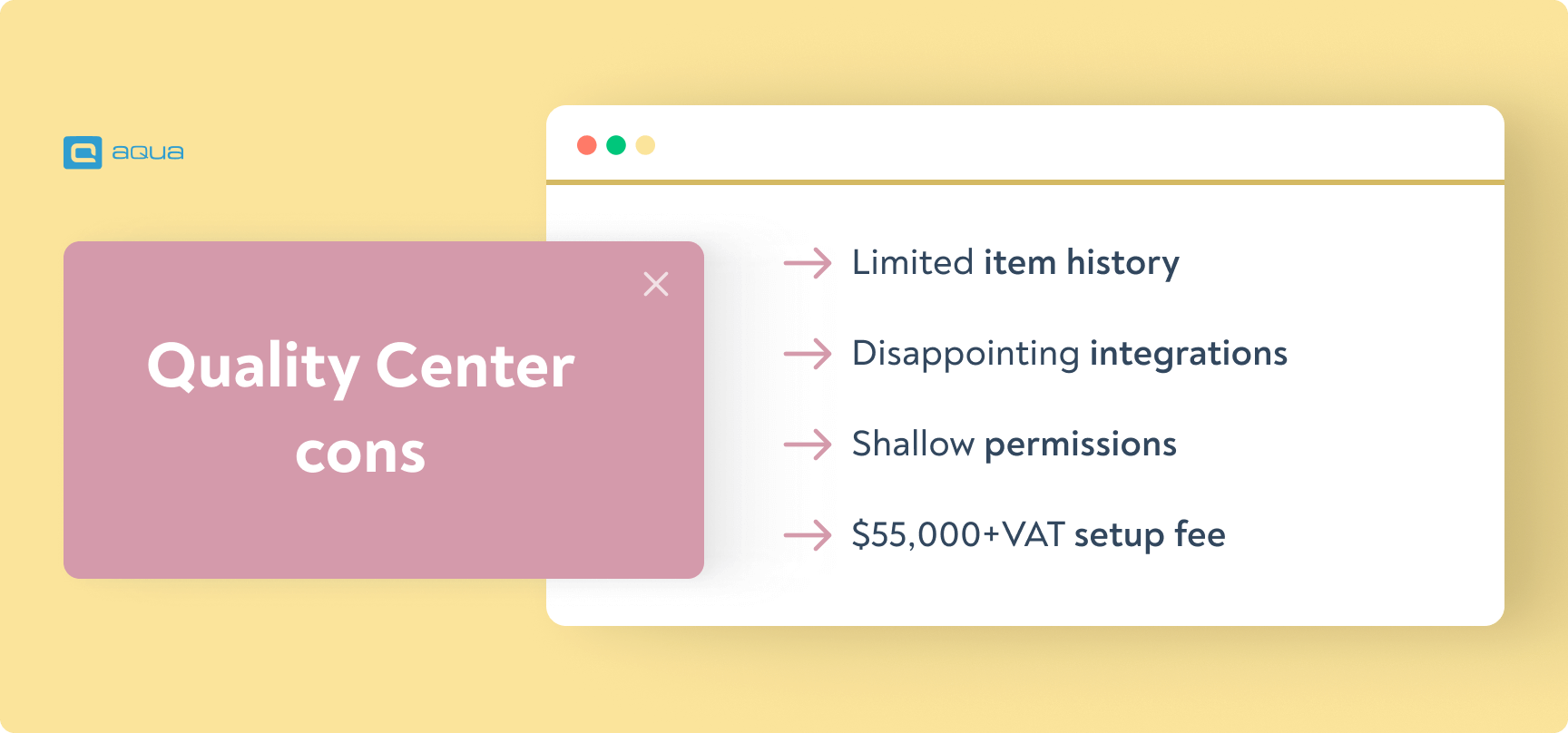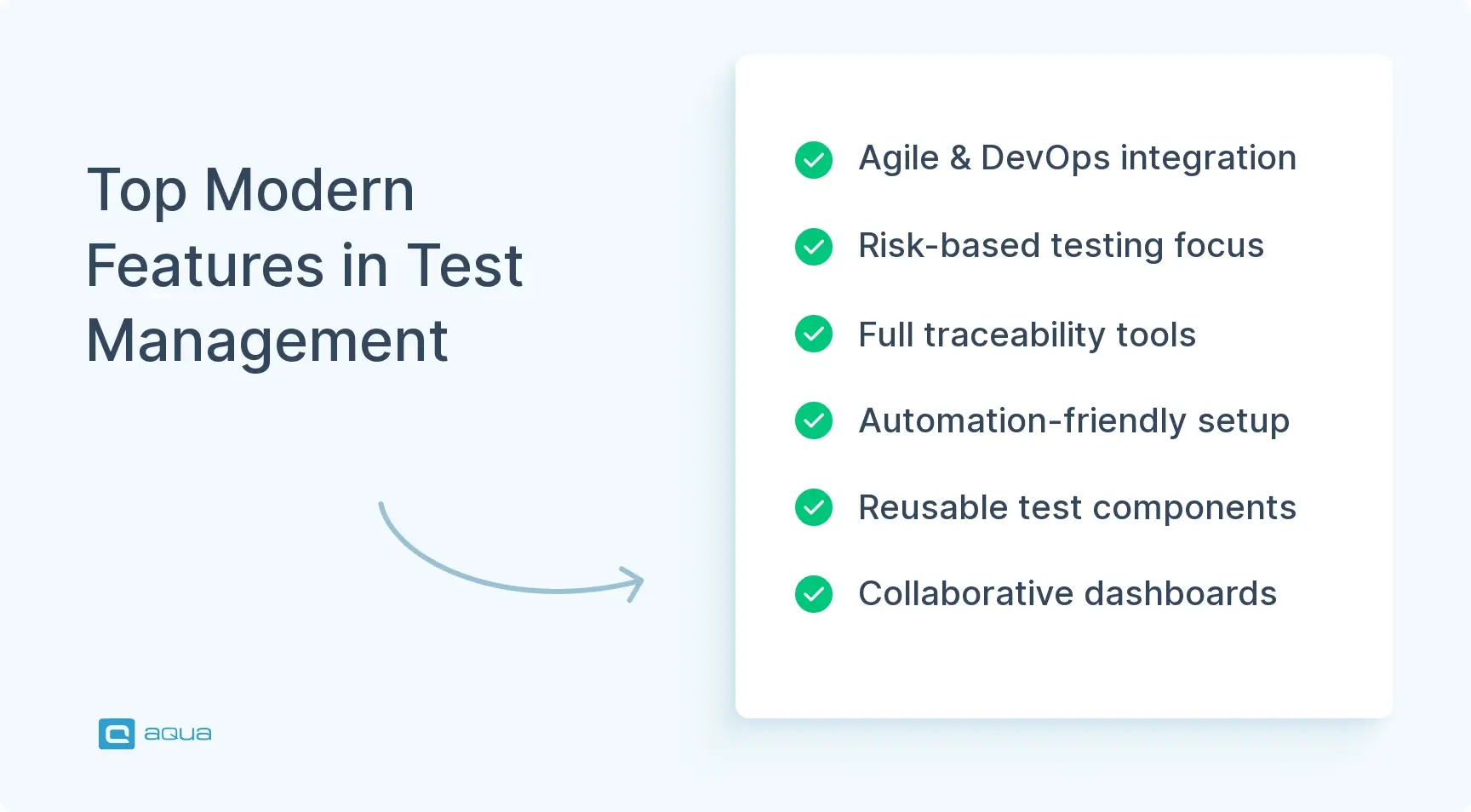About Micro Focus Quality Center
Originally called Test Director, the software was released back in the 1990s. It was a test management solution that focused on manual tests. Despite early entry-level editions, the software quickly shifted focus to large-scale operations. Quality Center changed hands multiple times and is now owned by the Canadian company OpenText.
Quality Center’s evolution into a complete ALM hub was impressive – but today’s market has left it behind. Modern alternatives integrate seamlessly with Agile methodologies and DevOps practices while offering what many teams desperately need: cloud flexibility and faster innovation cycles. When evaluating replacements, you need to focus first on how they connect to your existing CI/CD pipeline. This connection point often determines whether you’ll face frustrating workarounds or enjoy smooth sailing.
Pros & cons of using Micro Focus Quality Center
Below are the main advantages and disadvantages of using Micro Focus Quality Center as your primary tool for test management or even ALM.
Pros
- Quality Center has a very refined software testing experience. 30 years is plenty of time to get essential QA functionality and much more. The team behind the software didn’t waste that time. Here are the main features that your testers can use:
- Test cases
- Test scenarios
- Bulk test edits
- Execution history
- Nested test cases
- Release planning
- Filters
- Tampering-proof project logging
- Quality Center supports all major deployment models. Deploy on-premise or in the cloud — though remember that some regions face tighter regulatory constraints than what newer competitors offer. Many alternatives now provide GDPR-compliant EU cloud hosting and custom options that might better suit your compliance needs. Before deciding, check if your provider lets you “plant your flag” where your data governance actually requires it. On-Premise is becoming increasingly scarce even with major players like Atlassian.
- Quality Center has a future-proof approach to integrations. It supports REST API that allows you to integrate practically any software. This includes tools that were released since the last time you got an update to your Quality Center instance. Should Micro Focus stop active development, you will still be able to connect new tools as well.
- Quality Center offers excellent dashboards. You can visualise any data with all the main types of widgets, such as pie charts, line graphs, and much more. You can easily share these dashboards to people outside of the QC workspace. The killer feature, however, is KPI Alerts. You will get notified when a metric goes too high or too low — no need to actually monitor dashboards yourself.
Cons
- Item history management is limited. You don’t get a timestamped history of changes per item, which can make internal audits a slog. There is also no single-click functionality to revert the item to a previous state. This would be a frustrating problem if someone made an edit that was deemed unsuitable later.
- Out-of-the-box integrations are disappointing. You effectively get more integrations with Office 365 and Google Suite than other quality assurance tools. The only specialised integrations are Selenium, Jenkins, and UFT.
- Permissions could have been more extensive. Tools of different scales have been offering per user permissions for a while. With Quality Center, everyone can only be assigned a preset or custom role.
- The financial entry barrier is very steep. You have to pay $55,000+VAT before purchasing any licences, and this is a yearly setup & maintenance charge. There are no free or subsidised licences with reduced functionality available either.

Here is a review that highlights real-life capabilities and limitations of Quality Center:
“ALM/Quality Center is used for a variety of tasks: creating work items to assign to a resource (DBA, Developer, Analyst, etc.), creating ad-hoc requests for others to carry out, tracking defects and development of defect solutions as they move from test to production, as well as for project-related tasks.
ALM/Quality Center is well suited for assigning relatively quick, simple tasks to IT resources. I do not feel it is a holistically good product in terms of retaining a knowledge base for IT areas or problems. For example, the amount of clicking, different windows, and navigation that needs to occur to track an original issue through to its analysis, to its solution development, to its deployment is a very time-consuming and cumbersome task. It would be fair to say that the product was not intended for this, but it offers features to accommodate this, so it's also legitimate to criticise this aspect of the product.”
Modern Test Management Best Practices: What to Look for in 2025
Test management has grown up, far beyond storing cases. Modern platforms now power continuous testing in Agile and DevOps environments, hooking directly into CI/CD pipelines for instant feedback. Smart teams are focusing on risk-based approaches and tackle what matters most first. Building clear traceability from requirements to tests to bugs is just equally important.
Automation integration is a game-changing practice. The top platforms now play nice with everything from Selenium to Playwright, letting you mix manual and automated tests without the headache. Most QA teams waste hours on test maintenance; modular, reusable test components can cut that time in half.
Collaboration features have also become non-negotiable. Comments, notifications, shared dashboards – these seemingly simple tools can dramatically reduce the friction between QA, dev and product teams. When evaluating Quality Center alternatives in 2025, prioritise these capabilities to keep your testing both efficient and future-ready.

List of 3 QC alternatives
Now that you know key perks and flaws of Quality Center, let’s look at tools that do things differently.
Best AI and all-in-one QA: aqua
The aqua testing software has been in the market for over 10 years. It is run by aqua cloud GmbH, part of the andagon group that has been doing QA consulting in highly regulated industries since 2001.
aqua was the first Enterprise solution to adopt AI testing powered by GPT, the large language model behind ChatGPT. The company premiered the first AI features for aqua before OpenAI even officially revealed ChatGPT.
Here is what you can do it with AI in aqua:
- Optionally provide your past tests as context for the AI algorithm
- Generate entire tests with AI
- Cover a new requirement with tests in one click
- Update tests after a requirement was changed
- Finish test drafts in one click or iteratively with the AI chatbot
- Narrate a requirement with your voice and get a complete text ticket for it
- Remove duplicates
Apart from solid test management, reporting and integrations are a strong suite of aqua. You also get everything that Quality Center highlights as Enterprise features – and some extras.
Pros:
- AI test generation
- ALM functionality
- KPI Alerts
- Rich customised reporting, including self-updating scripts and parametrisation
- Workflows and views
- 12+ advanced QA integrations out of the box
- Native 2-way Jira sync with a simple setup — use advanced aqua & Jira features in one tool
- Free licences for manual testers and non-tech stakeholders
- On-Premise, GDPR-compliant EU Cloud, and Custom Cloud deployment
- 100+ individual user permissions
- Weekly & monthly feature releases that are well-documented in an extensive wiki
- Customer success team ready to help you via live chat, scheduled calls, or emails
Cons:
- REST API is required to match Quality Center’s office integrations — but they are trivial to set up
- No esignature functionality
“The reporting is meaningful and provides a good basis for decisions. After the employees have used aqua, they recognize the added value very quickly.”
Find a detailed comparison on our separate aqua vs Micro Focus page.
AI testing at Enterprise scale
The best Jira plugin: Zephyr
If you already use Jira for issue tracking, you may be interested in a Jira plugin that will take care of test management. Zephyr is one of the most established players in this niche, and it has more room to scale than most.
Pros:
- Simple to get started
- Keeps everything in Jira and elevates it to ALM
- Offers most key test management features
- Upgrade path to standalone Zephyr Enterprise
- 19 dashboard widgets — better than competitor Jira plugins
Cons:
- Zero AI test management features
- Goes down when Jira does
- No QA workflows
- Only Jenkins & Selenium for test automation
- No QA-specific reporting
- Limited data available for dashboards
- On-Premise discontinued by 2024 unless you adopt standalone Zephyr Enterprise — not as simple
“The fact that its interface has a fairly simple and straightforward design is excellent for us to use without any problems, the fact that it is not necessary to be an expert in programming is also quite practical.
There are many errors that can affect the performance of the application. It is enough to report to the customer service team and they quickly solve it, however I still believe that they should work better to prevent one from noticing that type of failure.”
Best QA-only sidegrade: TestRail
TestRail limits itself to test management, but the solution does it well at any scale. This includes good reporting and top-tier traceability, even if it comes with a caveat.
Pros:
- Polished test management experience
- Jira sync integration
- Cloud & On-Premise deployment
- Custom and feature-rich reporting
- Individual permissions
- Test case approvals, version control, audit log for traceability
Cons:
- No AI-powered testing
- Traceability features are locked behind Enterprise plan
- Just 4 out-of-the-box integrations for QA
- Even defect management requires an external solution
- Convoluted mapping when importing Excel-formatted test cases
- Unintuitive and time-consuming filtering
- Test cases UI requires excessive clicking compared to modern competitors
- API limits may force you to reorganise existing test automation setup
“For day-to-day test management of my project — I am able to do a lot of things. Test cases are reusable and I can report on some of their data.
The UI is a little clunky, the documentation is not super helpful, and the reports are not as customizable as I would like. I'd also like to be able to build out a tracking dashboard for one or more projects.”
Key Considerations for Migrating from Quality Center
Moving away from Micro Focus Quality Center can be a game-changer for your test management – but don’t jump in without a plan. Years of test data and custom workflows aren’t simple to pack up and move. Modern solutions now offer solid migration tools to ease the transition. Just make sure to validate everything twice before going live – many teams skip this step and regret it later.
Your team will need training, of course. Cloud deployments bring flexible scaling but watch those usage-based costs – they can sneak up on you if you’re not careful. For healthcare and finance folks especially: double-check data residency requirements early. Many companies have been burned by compliance issues that could’ve been avoided.
Start with a simple process map and data cleanup before even picking your new platform. This upfront work – though nobody likes doing it – typically cuts migration time by 30% and dramatically boosts adoption rates. Your future self will thank you.
Final thoughts: what tools to choose?
While we are not highlighting any Micro Focus free alternatives, the three options are diverse in many ways. They do things differently and perform stronger than Quality Center in their market segments. We didn’t want to look at side grades, because QC already fills a niche of costly tools with little headache but also little innovation.
If you want Quality Center but better, aqua tops the list of Micro Focus best alternatives. It offers Enterprise-scale functionality and expert traceability but also brings bleeding-edge AI testing and granular user permissions as well. You won’t miss much compared to QC, and you will also get a lot more features that it does not offer.
AI-powered QC replacement


















